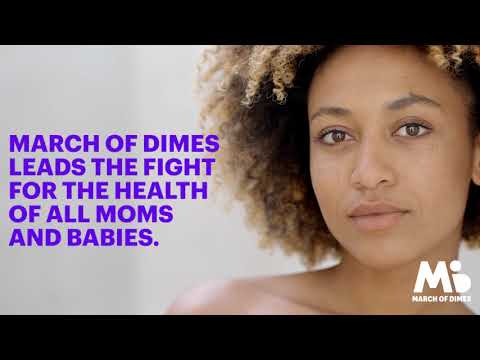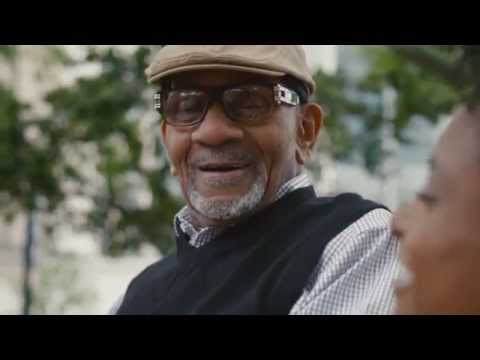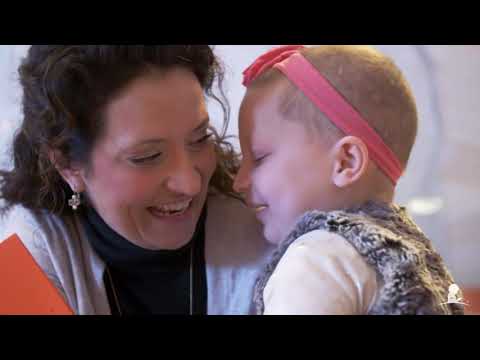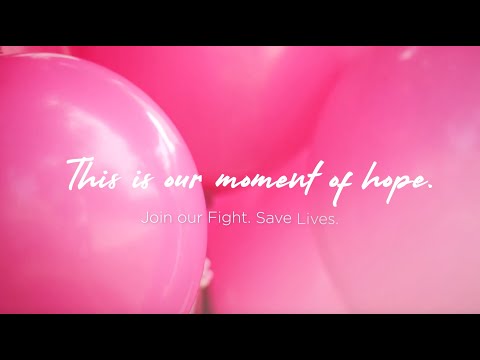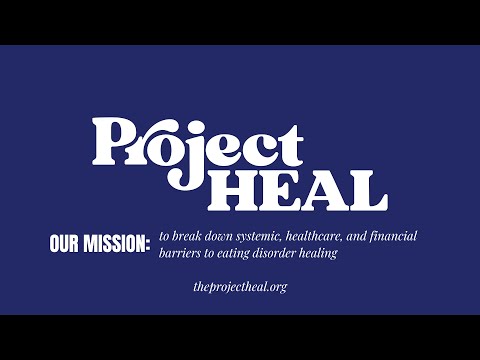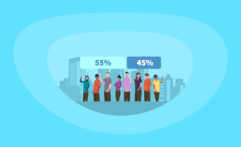9 Best Charities That Fight for Health Equity (Complete 2024 List)
Impactful Ninja is reader-supported. When you buy through links on our site, we may earn an affiliate commission.
Learn more
Learn more
.
Hey fellow impactful ninja ? You may have noticed that Impactful Ninja is all about providing helpful information to make a positive impact on the world and society. And that we love to link back to where we found all the information for each of our posts. Most of these links are informational-based for you to check out their primary sources with one click. But some of these links are so-called "affiliate links" to products that we recommend. First and foremost, because we believe that they add value to you. For example, when we wrote a post about the environmental impact of long showers, we came across an EPA recommendation to use WaterSense showerheads. So we linked to where you can find them. Or, for many of our posts, we also link to our favorite books on that topic so that you can get a much more holistic overview than one single blog post could provide. And when there is an affiliate program for these products, we sign up for it. For example, as Amazon Associates, we earn from qualifying purchases. First, and most importantly, we still only recommend products that we believe add value for you. When you buy something through one of our affiliate links, we may earn a small commission - but at no additional costs to you. And when you buy something through a link that is not an affiliate link, we won’t receive any commission but we’ll still be happy to have helped you. When we find products that we believe add value to you and the seller has an affiliate program, we sign up for it. When you buy something through one of our affiliate links, we may earn a small commission (at no extra costs to you). And at this point in time, all money is reinvested in sharing the most helpful content with you. This includes all operating costs for running this site and the content creation itself. You may have noticed by the way Impactful Ninja is operated that money is not the driving factor behind it. It is a passion project of mine and I love to share helpful information with you to make a positive impact on the world and society. However, it's a project in that I invest a lot of time and also quite some money. Eventually, my dream is to one day turn this passion project into my full-time job and provide even more helpful information. But that's still a long time to go. Stay impactful,Affiliate Disclosure
Why do we add these product links?
What do these affiliate links mean for you?
What do these affiliate links mean for us?
What does this mean for me personally?
![]()
Health equity is the state in which everyone has a fair and just opportunity to attain their highest level of health. Unfortunately, many people experience barriers to quality healthcare, such as high cost of care, inadequate insurance coverage, and lack of availability of culturally-competent services. And, these barriers often disproportionately affect members of certain populations, like racial and ethnic minority groups, people with disabilities, and those living in poverty. Luckily, organizations around the world are working to eliminate disparities in healthcare. So, we had to ask: What are the best charities that fight for health equity?
The best charities that fight for health equity are March of Dimes and the American Heart Association. Charities such as St. Jude Children’s Research Hospital and Susan G. Komen Breast Cancer Foundation work to ensure that all people facing deadly diseases have access to life-saving care.
Whether you want to help ensure equitable access to treatment for those suffering from eating disorders, help an older adult make the most of their insurance benefits, or fund research to better understand the root causes of health inequity, there is a charity for you. Keep reading to learn more about what the best charities that fight for health equity are all about, how they work, and what your best way would be to make a donation.
Here’s What All the Best Charities That Fight for Health Equity Have in Common
The charities on this list were chosen based on their mission, impact and transparency ratings, and achievements.
They operate primarily throughout the US and Canada, but some combat health equity disparities internationally.
Many of these charities fight for health equity by focusing on providing financial assistance to those in need. Others provide resources for healthcare providers to analyze and address their own biases.
Some work to break the cycle of poverty for the health of future generations, while others advocate for policies that increase access to quality care for marginalized populations.
Yet, they all share a common goal: to create a world where everyone has the opportunity to achieve optimal health.
These Are the 9 Best Charities That Fight for Health Equity in 2024
Below are our favorite charities that fight for health equity (you can click on their link to directly jump to their section in this article):
Best Charities That Fight for Health Equity
(At the end of this article we’ll also share our six-step approach on how you can select the best charity to support.)
March of Dimes: Health Equity for Mothers and Babies
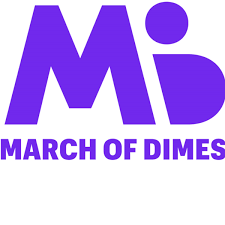
🔎
Their transparency & ratings:
Charity Navigator gives the March of Dimes a 2-star rating due to the amount of money they spend on their programs. GuideStar gives the charity a Platinum Seal of Transparency.
“Fighting for the health of all moms and babies.”
March of Dimes
⚒️
What they do:
March of Dimes fights for health equity for all mothers and babies through research, education, and advocacy. For example, through their Mom and Baby Action Network, they unite cross-sector stakeholders at national, state, and local levels to address factors that drive inequity, like economic insecurity and disconnected communities. As another example, they offer continuing education courses that help healthcare providers identify and mitigate implicit bias in maternity care. Furthermore, they advocate for policies that increase access to quality care in underserved communities through their Mamagenda for #Blanketchange campaign.
🚀
What they’ve achieved:
Today, March of Dimes is a leading force in the fight for health equity for all mothers, babies, and children. For example, in 2020, they received the American Hospital Association’s Award of Honor for their efforts to advance health equity through their implicit bias training, which has been offered to more than 35,000 healthcare providers in over 30 states. Furthermore, in 2021, they supported the American Rescue Plan Act, which extends postpartum Medicaid coverage for up to 12 months, ensuring that mothers can continue to access vital services after birth. And, their largest fundraiser, March for Babies, has generated over $1.8 billion to support their mission since 1970.
✨
Ways to contribute:
You can donate to March of Dimes via their website. You can also volunteer locally or create your own fundraiser.
American Heart Association: Ensuring Quality Cardiovascular Care for All
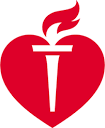
🔎
Their transparency & ratings:
Charity Navigator gives the American Heart Association a 4-star rating. GuideStar gives the charity a Platinum Seal of Transparency.
“Life is why.”
American Heart Association
⚒️
What they do:
The American Heart Association fights for health equity by identifying and removing barriers to high quality cardiovascular healthcare. In 2019, as part of their Live Fierce, Stand for All initiative, they announced their 10 commitments: bold actions they are taking to reduce disparities in cardiovascular healthcare by 2024. For example, they pledged to invest $100 million in new research programs and grants focused on science-based solutions to health inequities and structural racism. Furthermore, they are working to improve Medicaid expansion for under-resourced populations and rural communities. In addition, they are promising a new digital learning platform with courses on reversing structural racism and equitable healthcare delivery.
🚀
What they’ve achieved:
Since their founding, the American Heart Association has positively impacted the heart health of millions of people around the world, investing more than $5 billion in research since 1949 and contributing to a 15.1% reduction in deaths from heart disease since 2018. They have made significant strides toward their health equity goals: for example, they fulfilled their first commitment two years ahead of schedule by investing more than $114 million in new research to improve health equity. And, as part of their eighth commitment, they launched the Intelligo Professional Learning Hub in 2022, which includes free courses on improving health equity.
✨
Ways to contribute:
You can make a one-time donation to the American Heart Association via their website, or register to give monthly. You can also support the charity by volunteering or participating in an event in your local community.
St. Jude Children’s Research Hospital: Life-Saving Services, Free of Charge

🔎
Their transparency & ratings:
Charity Navigator gives St. Jude Children’s Research Hospital a 4-star rating. GuideStar gives the charity a Silver Seal of Transparency.
“No child should die in the dawn of life.”
St. Jude Children’s Research Hospital
⚒️
What they do:
St. Jude Children’s Hospital fights for health equity for children battling a range of diseases by providing life-changing medical services free of charge. They offer direct treatment to children with life-threatening diseases, including experimental or specialized treatment for children who have not responded to standard care. And, their programs promote culturally competent treatment to ensure that no family is excluded from the decision making process. For example, their Patient Family-Centered Care Program uses patient and family knowledge, beliefs, and cultural backgrounds to improve care planning and delivery. In addition, they offer training to future clinicians and biomedical researchers on a myriad of subjects, including health equity and treatment bias.
🚀
What they’ve achieved:
Since their founding, the St. Jude Children’s Research Hospital has remained committed to the health of all children, regardless of race, religion, or financial status, helping to push the overall survival rate for childhood cancer from 20% to over 80%. For example, in 1958, they launched the first comprehensive study of sickle cell disease and its impact on the African-American population. Moreover, in 1962, they opened the first fully integrated hospital in the southern US.
✨
Ways to contribute:
You can donate to St. Jude Children’s Research Hospital via their website. You can also participate in a fundraiser or volunteer at a chapter in your community.
Susan G. Komen Breast Cancer Foundation: A Legacy of Hope
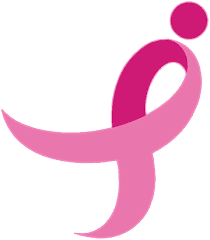
🔎
Their transparency & ratings:
Charity Navigator gives the Susan G. Komen Breast Cancer Foundation a 3-star rating. GuideStar gives the charity a Gold rating for transparency.
“Where the end of breast cancer begins.”
Susan G. Komen Breast Cancer Foundation
⚒️
What they do:
The Susan G. Komen Breast Cancer Foundation fights for the health equity of those with breast cancer through community health initiatives, global outreach, and advocacy. For example, their primary health equity initiative, Stand for H.E.R.- A Health Equity Revolution takes a multi-faceted approach to eliminating disparities in late-stage diagnosis and mortality rates between black and white women, especially in low-income, metropolitan areas. Furthermore, they work to increase access to culturally competent services by offering free patient navigation training to professionals working with black patients, and increasing access to genetic counseling and testing services. In addition, they advocate for policies that ensure access to high-quality care across populations.
🚀
What they’ve achieved:
Since their founding, the Susan G. Komen Breast Cancer Foundation has invested more than $2.3 billion in patient support services, serving millions of patients in over 60 countries. For example, in 2022 alone, they invested over $7.7 million in community health programs to remove barriers to care in underserved communities. In the same year, they endorsed the Improving Social Determinants of Health Act, which addresses the social, economic, and environmental factors that drive health inequity.
✨
Ways to contribute:
You can donate to Susan G. Komen Breast Cancer Foundation via their website. You can also fundraise through one of their events, such as a race or walk, or a pickleball tournament. In addition, you can join their advocacy efforts.
UNICEF: For Every Child in Danger
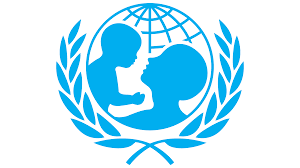
🔎
Their transparency & ratings:
Charity Navigator gives UNICEF a 3-star rating. GuideStar gives the charity a Gold Seal of Transparency.
“For every child in danger.”
UNICEF
⚒️
What they do:
UNICEF fights for health equity by working with local governments and partners to strengthen healthcare systems in impoverished and underserved communities. For example, they provide essential training and resources to frontline professionals in underserved communities. Additionally, they collaborate with local policymakers to develop cultural and age-appropriate health protocols to better care for newborns, children, and adolescents. Furthermore, they improve existing supply chains to ensure that healthcare professionals have the tools they need by working with private companies to develop quality, affordable medicines and equipment. And, they partner with the World Bank to produce global statistics about child poverty to guide policymakers and support the expansion of programs, such as universal child benefits.
🚀
What they’ve achieved:
Since their founding, UNICEF has changed the lives of millions of children living in poverty. For example, in 2021, they provided nutrition services to 336 million children worldwide and treated 5.5 million children for wasting due to malnutrition. In the same year, they procured $7.2 billion in supplies and services to strengthen fragile healthcare systems. They also worked with over 100 countries to accurately measure child poverty, and develop actionable plans to end it.
✨
Ways to contribute:
You can donate directly to UNICEF through their website. You can also support the charity by purchasing items from their online shop or by volunteering.
National Council on Aging: Equitable Aging Matters
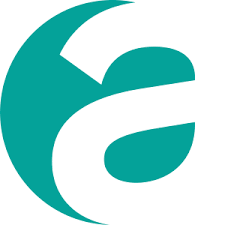
🔎
Their transparency & ratings:
Charity Navigator gives the National Council on Aging a 4-star rating. GuideStar gives the charity a Gold Seal of Transparency.
“Aging with dignity shouldn’t be a stroke of luck.”
National Council on Aging
⚒️
What they do:
The National Council on Aging fights for health equity for the elderly by providing resources, tools, best practices, and advocacy to ensure that every person can age with health and financial security. For example, their BenefitsCheckUp tool connects older adults with benefits programs that can help them pay for vital healthcare services, like doctor visits and prescription medicine. As another example, their Age Well Planner is a free assessment that provides older adults with a personalized collection of resources, like tips for fall prevention and expert advice on utilizing MediCare. And, they engage in political advocacy to promote equitable healthcare for older Americans.
🚀
What they’ve achieved:
Since their founding, the National Council on Aging has been a leading force in the fight for health equity for older adults. For example, in 1965, they successfully advocated for the laws that created Medicare, Medicaid, and The Older Americans Act. And, in 2022, their programs helped equip more than 24.4 million people, 93% of whom identified as low-income, with tools and resources to access equitable healthcare and financial security.
✨
Ways to contribute:
You can donate to the National Council on Aging via their website. In addition, you can join their advocacy efforts.
National Institute for Children’s Health Quality: Collaborating for Equity

🔎
Their transparency & ratings:
Charity Navigator gives the National Institute for Children’s Health Quality a 4-star rating.
“We make meaningful change. Everyday.”
National Institute for Children’s Healthcare Quality
⚒️
What they do:
The National Institute for Children’s Healthcare Quality addresses issues in children’s health, like health inequity, by bringing stakeholders together to design and execute programs that improve children’s access to quality healthcare. For example, they are helping create the Hemoglobinopathies National Coordinating Center to address structural and systemic barriers to care for Sickle Cell Disease, which disproportionately affects Black and Hispanic people. Furthermore, their Equity Systems Continuum Planning Grant project designs a tool to help healthcare providers evaluate and improve their health equity.
🚀
What they’ve achieved:
Since their founding, the National Institute for Children’s Healthcare Quality has participated in more than 80 initiatives to improve children’s healthcare, including projects that promote health equity. For example, in 2021, they published Early Childhood Health Equity Landscape, which analyzed early childhood initiatives across the US to identify and eliminate disparities in healthcare among young children. In the same year, they completed and disseminated the results of a study that identified barriers to ongoing care for Sickle Cell Disease to improve treatment outcomes.
✨
Ways to contribute:
You can donate to the National Institute for Children’s Healthcare Quality via their website. You can also get involved by starting or funding a project.
Project HEAL: Unlocking the Doors to Eating Disorder Recovery

🔎
Their transparency & ratings:
Charity Navigator gives Project HEAL a 3-star rating. GuideStar gives the charity a Platinum Seal of Transparency.
“We open doors to healing for those who the system fails.”
Project HEAL
⚒️
What they do:
Project HEAL helps people who might typically struggle to receive care to gain access to quality treatment for eating disorders, specifically members of the LGBTQ+, BIPOC, and other marginalized communities. For example, their Clinical Assessment Program provides free, impartial, and culturally competent screenings to anyone in the US who believes they might be suffering from an eating disorder. Furthermore, their Treatment Placement Program provides beneficiaries with extended treatment within their HEALers Circle network of providers at little to no cost. And, they provide cash assistance when needed, and also offer Insurance Navigation.
🚀
What they’ve achieved:
Since their founding, Project HEAL has improved treatment equity for thousands of people across the US seeking access to treatment for eating disorders. For example, in 2021, they provided over $2 million in free treatment services to underserved communities. Furthermore, in 2020, they formalized a partnership with the National Association of Anorexia Nervosa and Associated Disorders to merge their peer-support services, allowing them to help even more people suffering from eating disorders.
✨
Ways to contribute:
You can donate to Project HEAL via their website. You can also get involved by becoming a Project HEAL Ambassador, or by volunteering.
Save the Children: Ensuring a Healthy Start
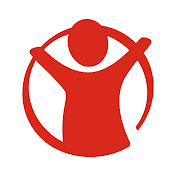
🔎
Their transparency & ratings:
Charity Navigator gives Save the Children a 4-star rating. GuideStar gives the charity a Platinum Seal of Transparency.
“All children deserve a healthy start in life.”
Save the Children
⚒️
What they do:
Save the Children fights for health equity by ensuring that high-quality health care is accessible to mothers, babies, and children living in poverty around the world. Their high-impact programs address some of the biggest threats to children’s health, including a lack of access to healthcare. For example, their Adolescent Health Program helps teens overcome barriers to reproductive healthcare by strengthening health systems. Moreover, their School Health and Nutrition Program partners with schools to improve health and nutrition, provide access to safe water, and promote lifelong healthy behaviors. Additionally, their Save the Children Action Network engages in political advocacy to promote policies that improve access to healthcare.
🚀
What they’ve achieved:
Since their founding, Save the Children has changed the lives of over 1 billion children. They have helped cut the number of children dying before age 5 in half since 1990 and helped reduce the number of children with stunted growth due to malnutrition by a third since 2000. For example, in 2021 alone, they helped improve the nutrition of 10.1 million children. In the same year, their policy, advocacy, and campaigning team generated 601,000 messages to lawmakers, promoting policies that include improving health equity across the US.
✨
Ways to contribute:
You can donate to Save the Children via their website. You can also participate in a fundraiser, volunteer, or sponsor a child.
How Can You Select the Best Charities to Support?
The charities on the list are, we deem, the best charities that fight for health equity. However, you may have a particular charity you want to support. Let’s look at what you can do to ensure your contribution has the most significant impact.
- Check out the charity website. Charities that are worthy of your donations are transparent in their mission and their figures. Familiarize yourself with their history, mission, and values. Their website usually is the best place to start.
- Identify the charity’s mission. Without a goal, the charity is likely to fail. If the charity’s mission isn’t clear, it’s probably worth looking for a charity that does have a clear mission.
- Check if the charity has measurable goals. An effective charity has clear goals. You want to know your donation will help the charity reach its goals. But if it doesn’t have targets, it’s likely to fail or squander your gift. The charity should be able to account for its spending and supply evidence of the work they do.
- Assess the successes or goals the charity has achieved. You wouldn’t invest in a business if it kept missing its targets. In the same way, charities are like this too. If no one is assessing a charity’s progress in reaching its targets, the chances are they’re not making a substantial positive change.
- Check the charity’s financials and stats. Trustworthy organizations will publish financial statements and reports each year. Some might be exempt from having to do so, but they should be able to provide them to public members who are interested in donating.
- Locate sources who work with or benefit from the charity. Word of mouth and first-hand experience of a charity’s work lets you know the charity’s quality. If you’re able to do so, check out the charity for yourself or speak to someone familiar with it. This way, your donation will go to the right place.
How Can You Best Support These Charities?
After you’ve made your decision, it’s time for you to decide on how you’d like to help the charities you’ve chosen. Check how you can help – each charity runs specific programs that have unique aims. Find out what the aim of such programs is and whether they are right for you.
Here are a few ways you can help your chosen charity:
- Donate money. You can find donation pages on the website of most charities. Your donation can be a one-time payment, or you can set it to be deducted regularly at different intervals. You can mostly pay via credit card, but some charities also take PayPal or Bitcoin payments.
- Buy their official merchandise. The charities can also raise money by selling merchandise. So, you can support them by buying the mugs, shirts, caps, pens, pencils, and any other such items they may be selling. Ideally, you should buy as much as you can to share and spread the word about the charity’s activities.
- Engage in volunteer work. As you’ve seen from our descriptions above, some charities engage in a lot of local and grassroots programs. You can help by taking on and organizing the program in your local area.
- Help their fundraising efforts. You can spread the word about the charity in your workplace, school, church, etc., and hold creative fundraising drives on social media or offline within your small circles.
- Share their stories. Most charities have compelling stories that you can share with your audience to attract more people to the cause.
Final Thoughts
Now it is up to you to select the charity that resonates most with you. And whichever charity you end up choosing and contributing to, we are sure that they will immensely appreciate your support. Hopefully, the information within this article has made this selection process a bit easier for you to support charities dedicated to fighting for health equity – based on the causes that matter most to you.
Stay impactful,

PS: Finally, I want to leave you with a thought-provoking TED talk from Dan Pallotta, a leading philanthropic activist and fundraiser, about what is wrong with the way we think about charities – and what we can do about it:
Sources
- Centers For Disease Control and Prevention: What is Health Equity?
- National Library of Medicine: The State of Health Disparities in the US
- March of Dimes: Home
- March of Dimes: History
- Charity Navigator: March of Dimes
- GuideStar: March of Dimes
- March of Dimes: Mom and Baby Action Network
- March of Dimes: Strengthening Economies
- March of Dimes: Building Safe and Connected Communities
- March of Dimes: Continuing Education
- March of Dimes: Mamagenda for #Blanketchange
- March of Dimes: News: Implicit Bias Training
- March of Dimes: 2020 Impact Report
- March of Dimes: March for Babies
- March of Dimes: Accomplishments
- March of Dimes: Advocacy Achievements
- March of Dimes: Donate
- March of Dimes: Fundraise
- March of Dimes: Volunteer
- American Heart Association: Home
- Charity Navigator: American Heart Association
- GuideStar: American Heart Association
- American Heart Association: Live Fierce, Stand for All
- American Heart Association: 10 Commitments Progress Report 2021-2022
- American Heart Association: Our Impact
- American Heart Association: Intelligo Professional Learning Hub
- American Heart Association: Ways to Give
- American Heart Association: Volunteer Opportunities
- St. Jude Children’s Research Hospital: Home
- St. Jude Children’s Research Hospital: History
- Charity Navigator: St. Jude Children’s Research Hospital
- GuideStar: St. Jude Children’s Research Hospital
- St. Jude Children’s Research Hospital: Treatment
- St. Jude Children’s Research Hospital: Patient Family-Centered Care Program
- St. Jude Children’s Research Hospital: Education Training
- St. Jude Children’s Research Hospital: Continuing Education
- St. Jude Children’s Research Hospital: Operating Model
- St. Jude Children’s Research Hospital: Saving All Kids
- St. Jude Children’s Research Hospital: Donate
- St. Jude Children’s Research Hospital: Get Involved
- St. Jude Children’s Research Hospital: Volunteer
- Susan G. Komen: Home
- Susan G. Komen: Home
- Charity Navigator: Susan G. Komen
- GuideStar: Susan G. Komen
- Susan G. Komen: Stand for H.E.R.
- Susan G. Komen: Closing the Breast Cancer Gap
- Susan G. Komen: Health Equity
- Susan G. Komen: 2022 Annual Report
- Susan G. Komen: Our Impact
- Susan G. Komen: Advocacy
- Susan G. Komen: Donate
- Susan G. Komen: Walks and Races
- Susan G. Komen: Pickleball
- Susan G. Komen: Advocate
- UNICEF: About Us
- Charity Navigator: UNICEF
- GuideStar: UNICEF
- UNICEF: Child Poverty
- End Childhood Poverty: Home
- UNICEF: Community Health
- UNICEF: Quality Care
- UNICEF: Strengthening Supply Chains
- UNICEF: 2021 Annual Report
- UNICEF: Ending Child Poverty
- UNICEF: Donate
- UNICEF: Shop
- UNICEF: Volunteer
- National Council on Aging: Home
- Charity Navigator: National Council on Aging
- GuideStar: National Council on Aging
- National Council on Aging: BenefitsCheckUp
- National Council on Aging: Age Well Planner
- National Council on Aging: Public Policy Positions
- National Council on Aging: History
- National Council on Aging: Donate
- National Council on Aging: Advocates
- National Institute for Children’s Healthcare Quality: Home
- Charity Navigator: National Institute for Children’s Healthcare Quality
- National Institute for Children’s Healthcare Quality: Mission
- https://www.nichq.org/project/hemoglobinopathies-national-coordinating-center-hncc
- National Institute for Children’s Healthcare Quality: Equity Systems Continuum Planning Grant
- National Institute for Children’s Healthcare Quality: Brochure
- National Institute for Children’s Healthcare Quality: Early Childhood Health Equity Landscape
- National Institute for Children’s Healthcare Quality: Disseminating Results: Sickle Cell Disease and Missed Clinic Appointments
- National Institute for Children’s Healthcare Quality: Donate
- National Institute for Children’s Healthcare Quality: Start a Project
- National Institute for Children’s Healthcare Quality: Fund a Project
- Project HEAL: Home
- Charity Navigator: Project HEAL
- GuideStar: Project HEAL
- Project HEAL: Clinical Assessment
- Project HEAL: Treatment Placement Program
- Project HEAL: Healers Circle
- Project HEAL: Cash Assistance
- Project HEAL: Insurance Navigation
- Project HEAL: Treatment Equity
- Project HEAL: 2020 Annual Report
- National Association of Anorexia Nervosa and Associated Disorders: Home
- Project HEAL: Donate
- Project HEAL: Become an Ambassador
- Project HEAL: Volunteer
- Save the Children: About Us
- Charity Navigator: Save the Children
- GuideStar: Save the Children
- Save the Children: School Health and Nutrition
- Save the Children: Hunger and Livelihoods
- Save the Children: Health
- Save the Children: 2021 Annual Report
- Save the Children: Donate
- Save the Children: Fundraise
- Save the Children: Volunteer
